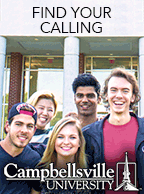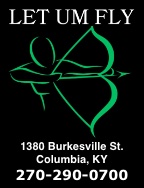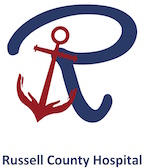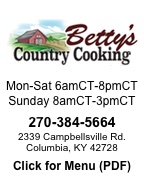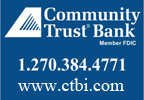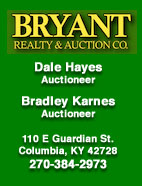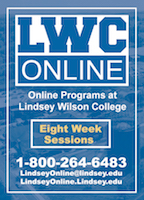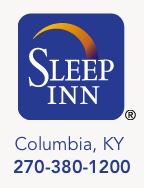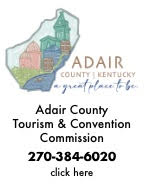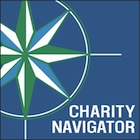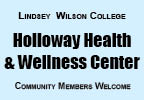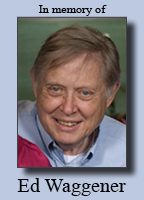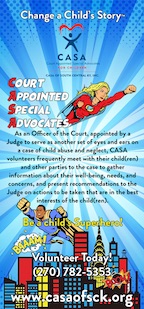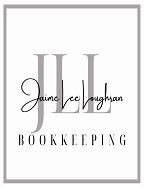| ||||||||||
Dr. Ronald P. Rogers CHIROPRACTOR Support for your body's natural healing capabilities 270-384-5554 Click here for details 


Columbia Gas Dept. GAS LEAK or GAS SMELL Contact Numbers 24 hrs/ 365 days 270-384-2006 or 9-1-1 Call before you dig Visit ColumbiaMagazine's Directory of Churches Addresses, times, phone numbers and more for churches in Adair County Find Great Stuff in ColumbiaMagazine's Classified Ads Antiques, Help Wanted, Autos, Real Estate, Legal Notices, More... 

|
Tom Chaney: Manhunt Of Writers And Their Books: Manhunt! Tom reviews James L. Swanson’s Manhunt: The Twelve-Day Chase for Lincoln's Killer, the best day by day, hour by hour account of the flight of John Wilkes Booth from his escape from Ford's Theatre to his capture in Virginia. This column first appeared 11 June 2006. The next earlier Tom Chaney column: Murder in Scandinavia By Tom Chaney Manhunt! The nation is beginning a three-year celebration of the bicentennial of Abraham Lincoln's birth in 1809. Of course the first of those festivities focuses on Kentucky marking his birth in the log cabin encased in marble up near Hodgenville. We will see a plethora of books about Lincoln emerge for the next half century until the bicentennial of his death in 2065 adding to the huge library of books on the nation's first president to be assassinated. Some of these will break new ground. Others will plow once again the well-worn furrows of his life and thought. One of the ground breakers was released earlier this year. James L. Swanson has written Manhunt: The Twelve-Day Chase for Lincoln's Killer published by William Morrow. To my knowledge it is the best day by day, hour by hour account of the flight of John Wilkes Booth from his escape from Ford's Theatre after his leap from the presidential box to his capture twelve days later in the Virginia countryside. Scholar that he is, Swanson acknowledges his debt to earlier historians, specifically George Alfred Townsend (1841-1914), Osborn H. Oldroyd (1842-1930), and James O. Hall, now in his nineties. As Swanson says, "All other scholars of the Lincoln assassination must stand on their shoulders." Richmond had fallen, Lincoln had gone to the captured city, had sat in Jefferson Davis' chair. A few days later Lee surrendered to Grant at Appomattox. April 11 saw torchlight parades in Washington celebrating the victory. The entire city was illuminated on the night of April 13. The next morning John Wilkes Booth went to Ford's Theatre to pick up his mail. Another letter had arrived by special messenger prior to Booth's visit. The president and Mrs. Lincoln would attend Ford's that night to see the tired comedy "Our American Cousin." Booth put his plan into effect. He knew the theatre and play intimately. Entering the presidential box, he shot Lincoln. As he lept from the box, he became entangled in the bunting draping its front, fell to the stage breaking his leg, and made his way to the rear of the theatre. John Peanut, a stage hand, was waiting in Baptist Alley with the murderer's horse. Booth mounted and escaped over the Navy Yard Bridge across the east branch of the Potomac (now known as the Anacostia) River to Maryland before the alarm was raised. He met his accomplice David Herold near Soper's Hill. Through the night of April 14-15 they fled, first to Surrattsville and John Lloyd's tavern, thence to the rural residence of Dr. Samuel A. Mudd, arriving about 4:00 a.m. Mudd treated him and did not notify the soldiers who were now scouring rural Maryland for the murderer. On Saturday evening, April 15 Booth and Herold met Oswald Swann who conducted them south to the residence of Sam Cox at Rich Hill. Cox conveyed them to Thomas Jones who secreted the fugitives in a pine thicket, bringing them food until Thursday, April 20th. All the while the net was closing. Rewards for the pair were growing by the day. Troops were passing nearby. Dr. Mudd was arrested. Jones found them a boat for the crossing of the Potomac. On Friday the 21st Booth and Herold began to row toward the Virginia shore, but became confused and landed up-river, still in Maryland at Indiantown. Saturday they attempted to cross again arriving at the home of Dr. Stuart in Virginia around 8:00 Saturday evening. Stuart refused them aid. Sunday the 23rd the pair crossed the Rappahannock River arriving at the home of Richard H. Garrett the following day. There they stayed until federal troops arrived on Wednesday, April 26. Booth and Herold were holed up in a tobacco barn near Garrett's house and refused to surrender. The troops fired the barn. Herold gave himself up. Sergeant Boston Corbett shot Booth by the light of the fire. Mortally wounded by the shot to the neck which paralyzed him, Booth died on Garrett's porch. His body was taken by wagon back to Washington. Swanson provides an excellent account of the events leading up to and following the assassination. His notes are enlightening and expand the story without intrusion. Now we evidently know what can be known about Booth's flight to ultimate capture. It is an exciting account of the murder, manhunt, and capture which changed the direction of history at the close of the Civil War. Tom Chaney can be found telling stories, planning his next meal, and occasionally selling books at THE BOOKSTORE Box 73 / 111 Water Street Horse Cave, Kentucky 42749 270-786-3084 Email: Tom Chaney - bookstore@scrtc.com http://www.alibris.com/stores/horscave This story was posted on 2015-12-20 05:26:00
Printable: this page is now automatically formatted for printing.
Have comments or corrections for this story? Use our contact form and let us know. More articles from topic Tom Chaney: Of Writers and Their Books:
Tom Chaney: Murder in Scandinavia Tom Chaney: Me Growed from a Pumpkin Seed Tom Chaney: Jim Lowe's Reading Suggestions Tom Chaney: Stories Rise Like Smoke Tom Chaney: I Don't Go To Church - Kneeling Bags my Nylons Tom Chaney: Understanding the Enemy Tom Chaney: Literature and the Plague Tom Chaney: The First Black Novel (More than Likely) Tom Chaney: Doing History - Celebrating Feet of Clay Tom Chaney: A World Made New View even more articles in topic Tom Chaney: Of Writers and Their Books |
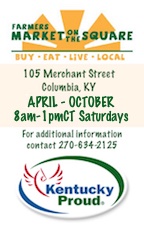
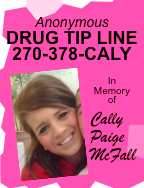
|
||||||||
|
| ||||||||||
|
Quick Links to Popular Features
Looking for a story or picture? Try our Photo Archive or our Stories Archive for all the information that's appeared on ColumbiaMagazine.com. | ||||||||||
|
Contact us: Columbia Magazine and columbiamagazine.com are published by Linda Waggener and Pen Waggener, PO Box 906, Columbia, KY 42728. Please use our contact page, or send questions about technical issues with this site to webmaster@columbiamagazine.com. All logos and trademarks used on this site are property of their respective owners. All comments remain the property and responsibility of their posters, all articles and photos remain the property of their creators, and all the rest is copyright 1995-Present by Columbia Magazine. Privacy policy: use of this site requires no sharing of information. Voluntarily shared information may be published and made available to the public on this site and/or stored electronically. Anonymous submissions will be subject to additional verification. Cookies are not required to use our site. However, if you have cookies enabled in your web browser, some of our advertisers may use cookies for interest-based advertising across multiple domains. For more information about third-party advertising, visit the NAI web privacy site.
| ||||||||||


